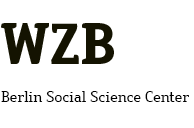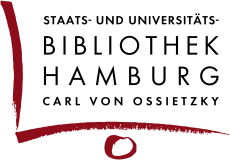SUCESSO DO ALEITAMENTO MATERNO NA PRIMEIRA HORA DE VIDA
Resumo
OBJETIVO: identificar a taxa de sucesso e os fatores maternos e neonatais associados ao sucesso do Aleitamento Materno na Primeira Hora de Vida (AMPHV) na Maternidade Municipal de São Vicente. MÉTODOS: trata-se de um estudo transversal observacional. Foram analisados dados de 1235 binômios mãe-bebê de partos de janeiro a dezembro de 2020 do respectivo hospital. Foram critérios de exclusão: natimortos, gemelaridade, prematuridade, parto domiciliar, teste rápido para HIV positivo, preenchimento incompleto dos livros de parto e RN encaminhados à Unidade de Terapia Intensiva neonatal. Os dados e fatores foram submetidos ao modelo Poisson para avaliação estatística. RESULTADOS: a prevalência global de AMPHV no estudo foi de 81,05%. O aleitamento materno nesse período foi mais prevalente entre os RN que tiveram contato pele a pele (RP 1,37, IC95% 1,27-1,47), temperatura de 36 a 37,5ºC (RP 1,09, IC95% 1,00-1,18) e escore de Apgar maior ou igual a 7 no primeiro minuto de vida (RP 1,40, IC95% 1,18-1,65). Já os RN que nasceram por via de parto cirúrgica (RP 0,77, IC95% 0,73-0,82) tiveram uma associação negativa com o AMPHV. CONCLUSÕES: foram fatores protetores para aleitamento materno na primeira hora de vida: a via de parto vaginal, a presença de contato pele a pele Apgar maior ou igual a 7 no 1º minuto e temperatura do RN de 36 a 37,5ºC.
BREASTFEEDING' SUCCESS WITHIN THE FIRST HOUR OF LIFE
PURPOSE: to evaluate maternal and neonatal factors associated with breastfeeding within the first hour of life and its success rate at São Vicente’s Municipal Maternity. METHODS: this is a cross-sectional observational study. Data of 1235 mother-infant binomial's births from January to December 2020 of the respective hospital were analyzed. Exclusion criteria were: stillborn, twins, prematurity, home birth, rapid HIV positive test, incomplete data from the birth books and newborns (NB) referred to the NICU. Data and factors were submitted to the Poisson’s model for statistical evaluation. RESULTS: the global prevalence of breastfeeding within the first hour of life in this paper was 81,05%. Breastfeeding during this time was more prevalent between NB who had skin-to-skin contact (PR 1,37, CI95% 1,27-1,47), temperature between 36 and 37,5ºC (PR 1,09, CI95% 1,00-1,18) and Apgar score 7 or higher in the first minute of life (PR 1,40, CI95% 1,18-1,65). On the other hand, NB who were born by cesarean section (PR 0,77, CI95% 0,73-0,82) had a negative association with breastfeeding within the first hour of life. CONCLUSIONS: Vaginal delivery, skin-to-skin contact, Apgar score 7 or higher and newborn’s temperature between 36 and 37,5ºC were protective factors for breastfeeding within the first hour of life.
Palavras-chave
Texto completo:
PDFApontamentos
- Não há apontamentos.
Direitos autorais 2023 Revista UNILUS Ensino e Pesquisa - RUEP
ISSN (impresso): 1807-8850
ISSN (eletrônico): 2318-2083
Periodicidade: Trimestral
Primeiro trimestre, jan./mar., submissões até 31 de março, publicação da edição até 15 de agosto.
Segundo trimestre, abr./jun., submissões até 30 de junho, publicação da edição até 15 de outubro.
Terceiro trimestre, jul./set., submissões até 30 de setembro, publicação da edição até 15 de janeiro.
Quarto trimestre, out./dez., submissões até 31 de dezembro, publicação da edição até 15 de abril.

Este obra está licenciado com uma Licença Creative Commons Atribuição-NãoComercial-SemDerivações 4.0 Internacional.
Indexadores
Estatística de Acesso à RUEP
Monitorado desde 01 de dezembro de 2025.
Monitorado desde 22 de novembro de 2016.













